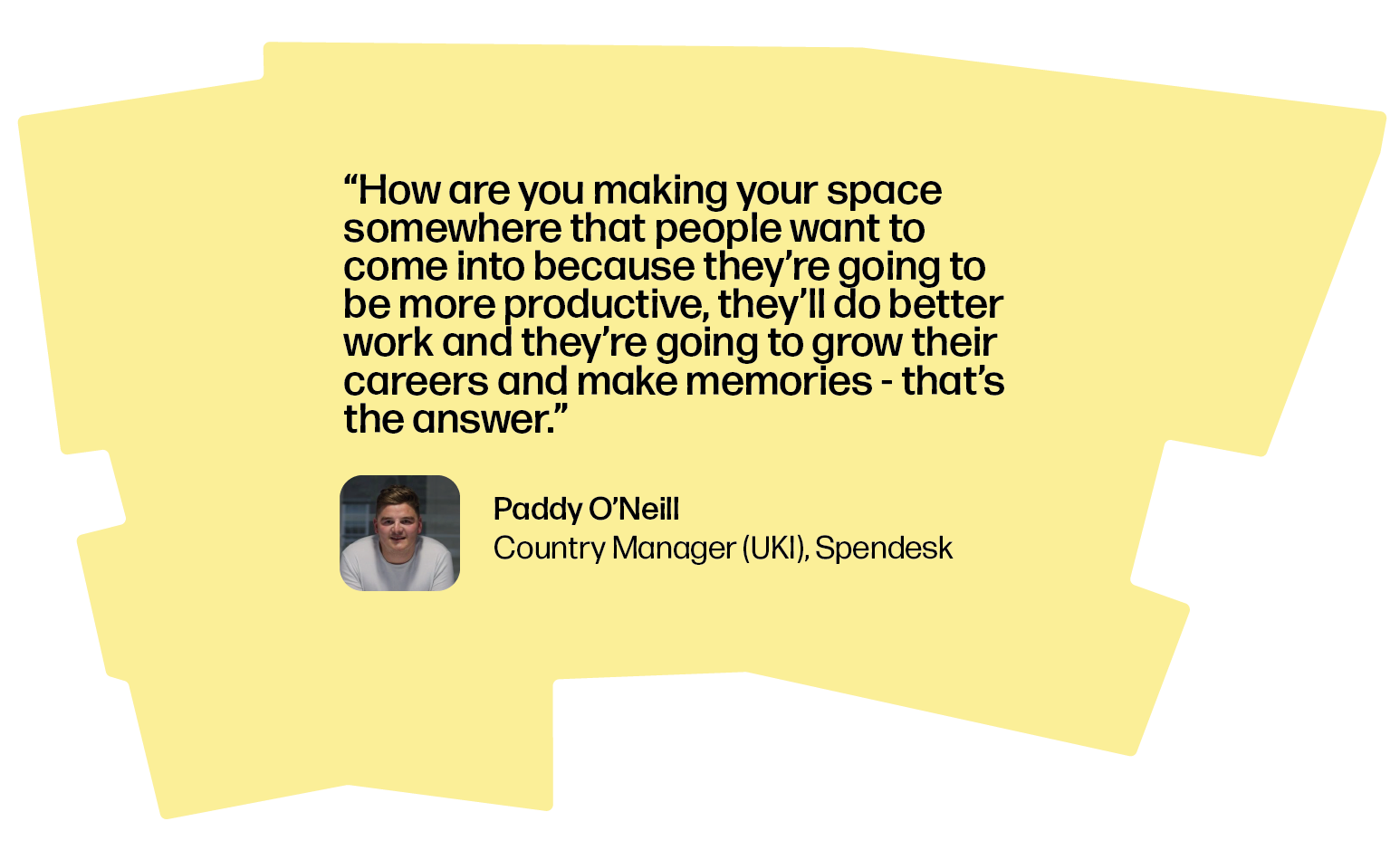Back in 2020, the UK Spendesk team were a startup within a startup trying to figure things out. Much like other great scaling businesses, they quickly jumped from half a dozen people in a co-working room, to two rooms, three and then a whole floor in a short space of time.
By the end of 2021, there was a realisation that, first of all, they were here to stay in the UK, and second of all, that if they were going to do that they really needed to make sure that they had a home. For a business so wedded to the idea of human connection, the reality of their co-working space bursting at the seams became too pressing to ignore.
Dealing with a cultural misalignment
When the business really started to grow, doubling its headcount in a matter of months, stairwells quickly became meeting rooms and there was a feeling that a change was needed. The clear goal for Spendesk was to align its own environment with its mission as a company – liberating people to do their best work.
“I remember mentioning to a colleague that I hadn’t seen some of his team in a long time, and he said that sometimes they find it a little uncomfortable coming into the office because they might not be able to find somewhere to take a call for an important meeting,” said Paddy O’Neill, UKI Manager at Spendesk who joined the business in March 2020.
“That’s when it hit home that it was time for a change. If we’re saying that we want people to do their best work, yet some of our people don’t want to come into the office, that’s a crucial misalignment.”
Optimising for different needs
With sights set on a new London home for the Spendesk brand in mid-2022, the brief for how it should look had already started to form. The space needed to be functional, drive human connection and most importantly realign their culture with their company mission.
Given the team's difficulties in their previous workspace, functionality was a key part of the brief. Within a company like Spendesk, you’ll likely have a broad spectrum of working preferences, and any office space created in the hybrid work world needs to be optimised for that actuality. Understanding how different teams like to work and interact with the space was important.
“Functionality was really important to me. Some of our team like standing up when working, or being surrounded by a collaborative environment – but some of them also like hiding away in the nooks and crannies so they can get through emails,” O’Neill said.
Spaces for human connection
The other half of the brief was to leverage something that the Spendesk team felt had been lost over the various lockdowns and in their old workspace – human connection. There are company moments that take place throughout the week that their space needed to facilitate, enabling colleagues to come together to catch up and, at times, learn together.
“Something I’ve always loved to do is to have lunch together. When we’re all grey and old, we’re not going to look back and remember meetings, but you will remember those interpersonal moments. I think the space that you take needs to reflect that and needs to harness that – it’s a place where you can make memories to look back on.”
“When we were talking about the space, what we really wanted to do was to have somewhere that could make us feel smaller than we are. So that we can get to 100, or 150 employees, we could still create the feeling that we had when we were just 6 people in a co-working room,” said O’Neill.

The hybrid working strategy
Like many other businesses, the Spendesk team are still experimenting with their hybrid working strategy. They plan to land on some form of hybrid that is more weighted towards the office because what they do know is that they want people in. And that’s not just for the sake of having employees sit at their desks – days are planned intentionally so that those great team interactions take place.
“If you do want everyone into the office, you need to be able to entice your employees,” says O’Neill. “Where companies are getting it wrong is telling people they have to go into the office, but all that’s waiting for them is a grey cubicle to work in and then leave.”
“How are you making your space somewhere that people want to come into because they’re going to be more productive, they’ll do better work and they’re going to grow their careers and make memories - that’s the answer.”
%202.jpg?width=2496&height=1664&name=Kitt%20Spendesk%20-%20Office%20Curator%20-%20LARGE-2%20(1)%202.jpg)
The future of work (and workspace) at Spendesk
For Spendesk, and O’Neill in particular, the exciting future of work is how spaces can reflect teams, and how teams can really get to work with that space – whether it’s three days a week or five days a week.
“Finding the right place for your company is really difficult, but the important thing is that it’s the right place for you, and not just the right place because it’s on the market,” said O’Neill. “The really exciting thing to watch out for is how places are going to change.”
Take a closer look at the Spendesk office here.

